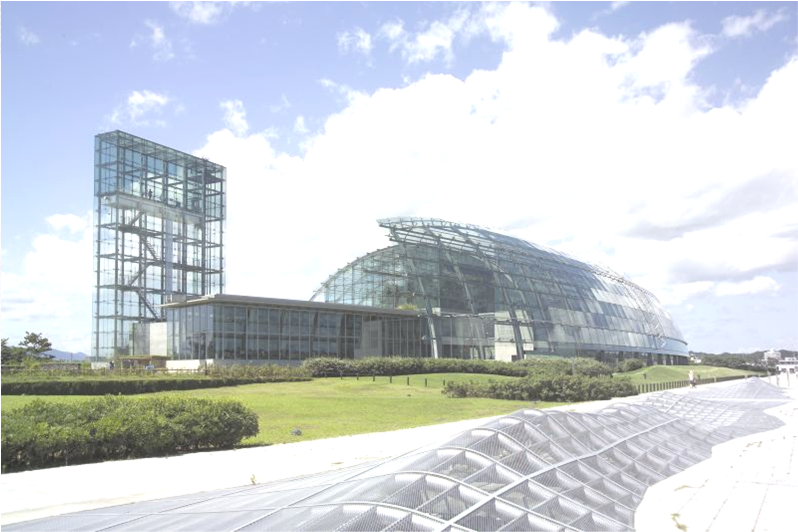ISAB2010 |
International Symposium on Application of Biomechanical Control Systems to Precision Engineering |
| -Engineering Review of Biological Evolution of Motion Control- July 22-24, 2010, Aquamarine Fukushima, Iwaki-city, Fukushima, Japan |
|

What's New?
July 24, 2010 ISAB2010 concluded today with 112 total participants. We would like to thank you and hope you've enjoyed the conference in Aquamarine Fukushima. July 17, 2010 Announcement: Dr. Per Erik Ahlberg won't be able to participate in the symposium due to the serious illness of his relative. However, his presentation will be posted as a poster at the dialogue session on July 23rd. July 8, 2010 The due date for payment using credit cards or bank transfer is July 15. Otherwise, payments should be done by cash on site. July 7, 2010 The detailed program, presentation list and travel information have been shown in the "Conference Program" page. April 29, 2010 "Abstract Submission" page has been replaced to "Final Paper Submission" page. April 28, 2010 A new page on "Registration" is open. Note that "One-day participation" has been added as a new registration category. Hotel Accomodation has been added. March 17, 2010 Submission deadline has been extended. The deadline for one-page abstract is 24:00 (Japan Standard Time) on March 31st. March 15, 2010 The final/abstract papers formant has been uploaded. The required format of the final paper is the same with the abstract paper while the final paper should range from 1 to 8 pages in length. February 5, 2010 The session pogram has been shown in the "Conference Program" page. February 1, 2010 "Abstract Submission" page has been added. December 29, 2009 Sponsors and Technical Co-sponsors have been listed. December 11, 2009 "How to make a PDF file" pages have been added. November 17, 2009 All important dates have been extended. November 6, 2009 "Travel and Accomodation" page has been added. October 30, 2009 The conference site is open. ISAB2010-Engineering Review of Biological Evolution of Motion Control-
International Symposium on Application of Biomechanical Control System to Precision Engineering (ISAB 2010)
– Engineering Review of Biological Evolution of Motion Control – will be held in the Aquamarine Fukushima (AMF),
Japan, from July 22nd to 24th , 2010.
Purpose of the Symposium entitled above is to examine the evolutional transitions from a view point of motion control by bringing different descriptions from various research fields of biology and engineering and to verify evolutional changes of animal movements utilizing robotics engineering as a neuro-muscular driving system. The essence of animal is locomotion. A living cephalochordate, lancelet emerged in early Cambrian period and is still showing us sigmoid swimming form. The lancelet has no brain, but has well developed somatic muscles and neural networks. The electron microscopic structure of the muscle is surprisingly similar to the one of striated muscle of present higher animals. It is well known that the CPG of locomotion is located at the spinal level of the terrestrial animals, and a muscular arrangement of animal extremities including human consists of the antagonistic pairs of mono-articular muscles and bi-articular muscles. The bi-articular muscle passes over adjacent two joints and acts at the both joints simultaneously. The muscle is observed in all terrestrial quadruped and biped animal extremities, not only in mammals but also birds, reptiles, and even amphibians. Therefore, there is no doubt that the primitive amphibians could have been equipped with the bi-articular muscle as well as the mono-articular muscle through landing drama from the end of Devonian period to the beginning of Carboniferous period. On the other aspect, the recent robotics engineering analyses have revealed that the existence of the bi-articular muscle contributed to excellent control properties and output force characteristics of the two-joint link mechanism, resulting in human-like smooth, rapid and precise link movements. Further, it may become possible to discuss relationships between link parameters of fossils and their control properties sufficient enough to survive. We are hoping that we will be able to shed new light on our understanding of evolutional transitions and on a reconstruction of future humanoid engineering based on the bi-articular muscle coordinate system in the Symposium. Submission
This symposium will be composed of dialog open sessions by general subscribers and organized panel sessions by invited speakers
from biology and engineering areas. Prospective authors should submit their papers electronically in PDF format indicating here.
It should be noted important dates shown below.
Sponsors:
The Japan Society for Precision Engineering (JSPE)
Technical Committee for Application of Animal Inspired Motion Control Mechanism In Cooperation with:
Fukushima Prefecture
National Museum of Nature and Science, Tokyo Technical Co-sponsors:
The Institute of Electrical Engineers of Japan (IEEJ)
The Japan Society of Mechanical Engineers (JSME) The Anthropological Society of Nippon (ASN) The Japanese Association of Anatomists (JAA) The Zoological Society of Japan (ZSJ) The Ichtyological Society of Japan (ISJ) Society of Evolutionary Studies, Japan (SESJ) Physiological Society of Japan (PSJ) The Society of Instrument and Control Engineers (SICE) The Japanese Physical Therapy Association (JPTA) The Robotics Society of Japan (RSJ) |
| Copyright 2009 -ISAB2010- All rights reserved. | ||